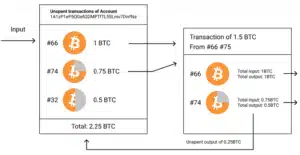Unearthing Digital Yuan: China’s Cryptocurrency Vision

In recent years, China has made significant strides in the realm of digital currencies, particularly with its development and implementation of the Digital Yuan. This ambitious project, driven by the People’s Bank of China (PBOC), has garnered international attention and raised questions about its implications for the global cryptocurrency landscape. In this article, we will delve deep into the subject of Digital Yuan, exploring its origins, technology, usage, and the potential impact it could have on the world economy. For those seeking to participate in this evolving landscape, this trading Website stands as a prominent player, facilitating convenient access to Digital Yuan trading on a global scale.
Table of Contents
The Genesis of Digital Yuan
To understand the significance of Digital Yuan, we must first examine the historical context. China’s interest in digital currencies can be traced back to the early 2010s when Bitcoin began gaining prominence. Concerned about the rise of decentralized cryptocurrencies and their potential to undermine traditional financial systems, China began researching digital currencies.
Key events leading to the development of Digital Yuan include the appointment of Zhou Xiaochuan as the Governor of the PBOC, who actively promoted the idea of a central bank digital currency (CBDC). This vision gained momentum with the unveiling of the Digital Currency Electronic Payment (DCEP) project in 2014, which laid the groundwork for the Digital Yuan.
Understanding Digital Yuan
Digital Yuan, often referred to as e-CNY, stands in stark contrast to decentralized cryptocurrencies such as Bitcoin and Ethereum. Unlike these autonomous digital currencies, Digital Yuan is under the direct issuance and oversight of the central authority, the People’s Bank of China (PBOC). Operating on a permissioned blockchain, this approach grants the government the ability to uphold control over the currency, while simultaneously harnessing the benefits of blockchain technology to enhance efficiency and transparency in its operations.
Digital Yuan in Practice
Digital Yuan is not a concept reserved for the distant future; it’s already in use within China. Several cities have launched pilot programs to test its functionality, and citizens can use it for various transactions, from shopping to public transportation. These pilot programs aim to refine the technology, improve user experience, and identify potential challenges before a nationwide rollout.
The potential use cases for Digital Yuan extend beyond domestic transactions. China envisions its digital currency playing a crucial role in international trade, simplifying cross-border transactions and reducing reliance on the U.S. dollar.
The Technology Behind Digital Yuan
The underlying technology of Digital Yuan combines elements of blockchain and cryptography. While it doesn’t operate on a fully decentralized blockchain like Bitcoin, it employs cryptographic techniques to ensure security and privacy. The use of blockchain also enhances the efficiency of transactions, making them faster and more transparent.
Security measures and privacy considerations are central to Digital Yuan’s design. The PBOC has implemented features that protect user data and prevent fraud while maintaining strict control over the issuance and flow of the currency.
Global Implications
The international community closely watches China’s approach to promoting Digital Yuan’s adoption abroad. China has initiated discussions with multiple countries to explore the possibility of cross-border usage of the digital currency. This could potentially reduce the global dominance of the U.S. dollar in international trade.
However, other nations are cautious, raising concerns about the Digital Yuan’s potential to challenge the existing global financial system. They worry that the centralized nature of Digital Yuan could give China undue influence over international transactions and financial stability.
Future Prospects and Challenges
China’s long-term vision for Digital Yuan includes expanding its usage both domestically and internationally. The government aims to create a more convenient, efficient, and secure financial system. However, several challenges lie ahead.
Regulatory hurdles must be overcome to facilitate cross-border usage, and international cooperation will be crucial in addressing these issues. Concerns also linger about the potential risks, such as data privacy and security breaches, which must be effectively mitigated.
Conclusion
In conclusion, China’s Digital Yuan initiative represents a groundbreaking leap into the future of digital currencies, blending centralized control with cutting-edge blockchain technology. As China continues to refine and expand the Digital Yuan’s reach, the global community closely observes the transformative potential it holds, as well as the challenges it may pose. Beyond China’s borders, the Digital Yuan’s implications reverberate, positioning it as a topic of immense global significance within the dynamic realm of cryptocurrencies.









